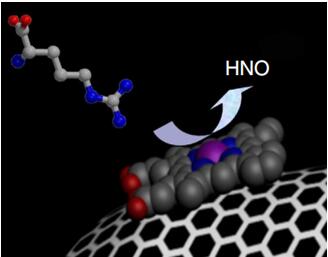- Home
- About Us
-
Products
- Enzymology
- According to the Catalytic Activity
- According to the Type of Materials
- Applications
- Services
- Knowledge Base
- Contact Us

Thrombosis is one of the most common and serious problems that cause complications of blood upon contacting with biomedical devices including catheters, vascular grafts and heart valves, which seriously threatens people's lives and health. Therefore, the importance of antithrombosis has become increasingly prominent. One potential solution is designing antithrombotic coatings on these devices to efficiently inhibit the formation of thrombosis. Nitric oxide (NO) and nitroxyl (HNO) have been shown to have antithrombotic properties, so numerous efforts have been dedicated to the fabrication of polymeric coatings that can release or generate NO. A large part of the research focuses on exogenous NO donors, such as diazodiazoate, which can immediately release NO when exposed to water or physiological environment (i.e., blood, body fluids, etc.). However, the current sources of exogenous NO donors are limited and unstable. Therefore, surface coatings capable of catalytically generating NO or HNO from physiological components may provide a more attractive strategy for sustained release of NO or HNO. Nanozymes have good stability and biocompatibility, and their efficient catalytic ability can be used to biomimeticly generate antithrombotic substances from endogenous substances. It is believed that the application of nanozymes in antithrombosis will be gradually developed in the future.
Nanozymes can be used to prepare antithrombotic coatings for blood-contacting biomedical devices. For example, Duan et al. designed graphene-haemin-glucose oxidase nanocomposites for antithrombosis. They use grapheme nanozyme as the template to assemble glucose oxidase as well as hemein. The integrated graphene-haemin-glucose oxidase catalysts can readily enable the continuous generation of antithrombotic HNO, from physiologically abundant glucose and L-arginine. Embedding this tandem catalysts into biocompatible films can create long-lasting antithrombotic coatings for blood-contacting biomedical devices[1]. In addition, nanozymes can also be used for thrombolytic treatment of thrombi that have formed in blood vessels. They can serve as carriers to achieve targeted delivery and controlled release of thrombolytic drugs.
 Fig.1 Graphene-haemin-glucose oxidase
Fig.1 Graphene-haemin-glucose oxidase
catalysts catalyzes the generation of HNO.
Alfa Chemistry can offer a wide variety of nanozymes, which have a promising future in antithrombosis. In particular, they can be used in antithrombotic coatings for blood-contact biomedical devices. We will offer the most suitable nanozymes according to customer's detailed requirements. At the same time, we also offer product customization. If you have any questions or needs, please don't hesitate to contact us. Alfa Chemistry will provide you with the most professional service.
Reference
Please kindly note that our products and services are for research use only.
Privacy Policy | Cookie Policy | Copyright © 2025 Alfa Chemistry. All rights reserved.